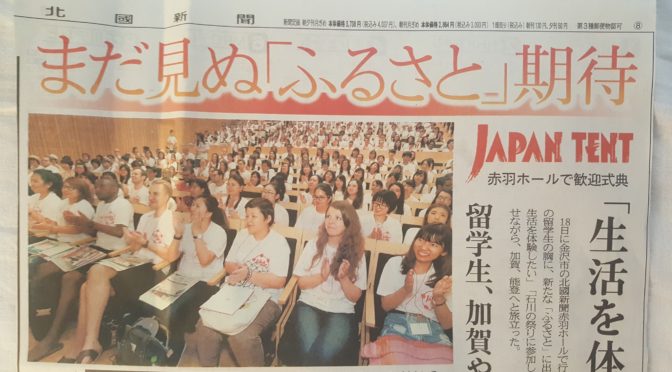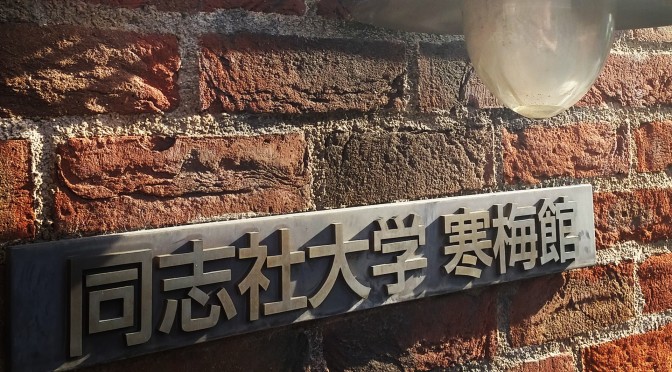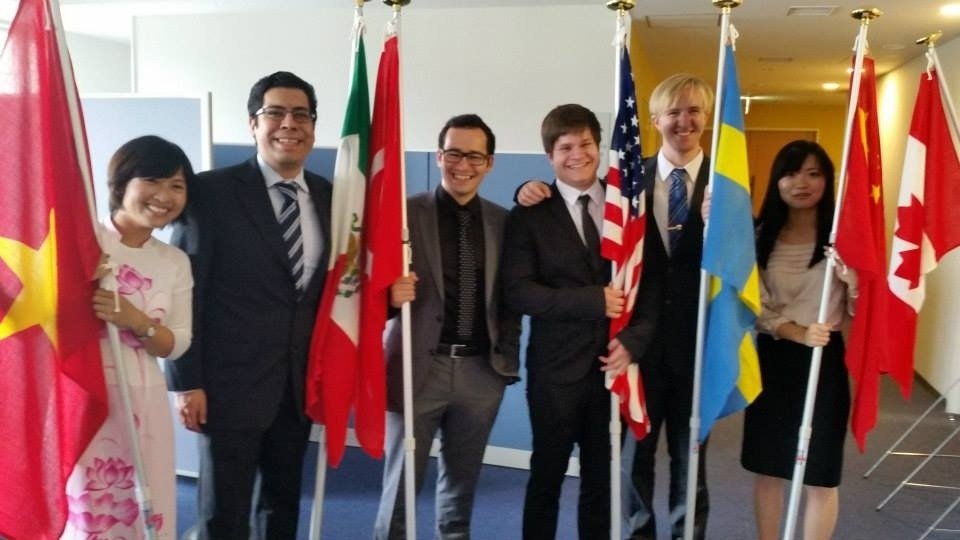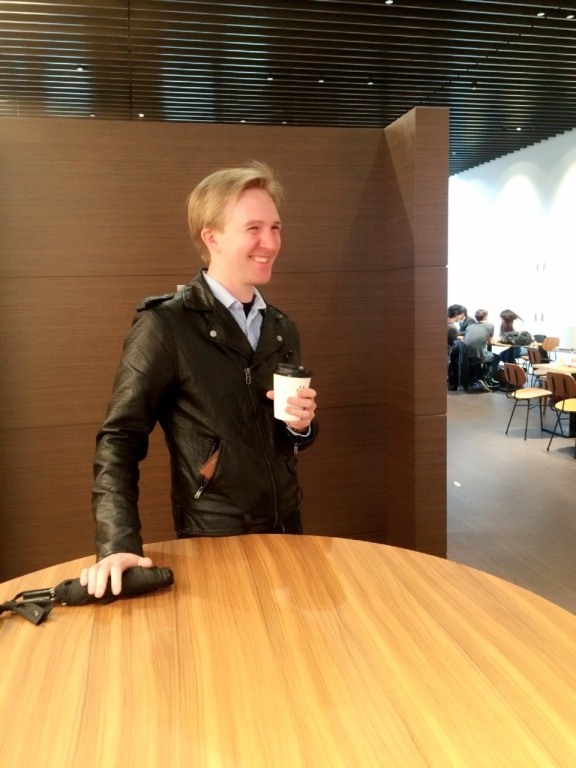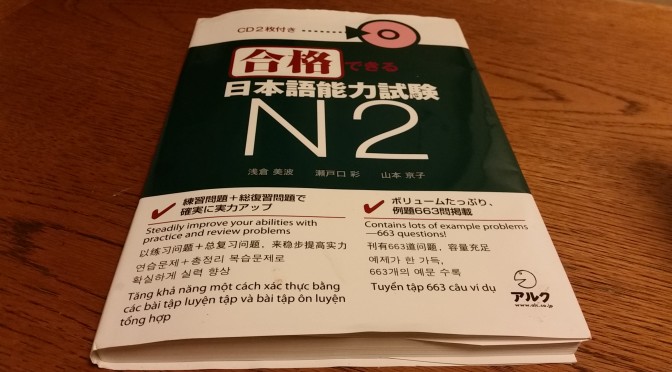I’m finally graduating with an MBA from Doshisha University in two weeks from now. As a great way to end my life as a student, I participated in JAPAN TENT. In this program, 300 foreign exchange and research students from 78 different countries around the world are gathering together in Ishikawa Prefecture for a one-week homestay. I was offered a chance to live with two local families in the remarkable beautiful and culturally rich Ishikawa.
The first three days I stayed at Shun’s house and explored the Noto peninsula, which has excellent seafood and interesting history from the Jomon period. I woke up every morning to the smell of freshly brewed coffee from Shuns own Cafe Urara. The most memorable experience was carrying around a Kiriko or a giant festival lantern at the Noto Kiriko Festival.
The last three days I stayed with the Kobori family in their huge Japanese house in Nonoichi. It was obvious to me that the Kobori’s represents the stereotypical image of a Japanese family: Grandpa works in the rice field and garden, Grandma stays home and cooks, Father works at a manufacturing company, Mother stays home with the baby and the rest of the kids goes to school. The Kobori family gave me a very warm welcome and showed the Japanese hospitality. In Nonoichi, I tried making magatama (a kind of power stone) and wagashi (Japanese sweets). The last day of the homestay we visited Kenrokuen, a landscape garden said to be one of the three great gardens of Japan.
I will never forget my time in Ishikawa learning of Japans traditional culture. At the last day, I got a notice that I was one of the 10% selected to become ambassadors for the Japan Tent program. Japan Tent is free of charge and all expenses are covered by sponsoring partners and volunteers. I warmly recommend You to apply for the program in 2017 because this is a new way to get introduced to traditional Japanese culture.
京都の同支社大学に在学中、石川県のJapan Tentプログラムでの体験は学生生活の中で一番よい思い出になりました。このプログラムは世界中での78の国々の300の留学生を集まりました。綺麗として文化的な石川県にホームステイをしに行きました。石川県で二つの家族に泊まるチャンスがありました。
最初の三日間はしゅんさんの家に泊まって巡りました。新鮮魚が美味しくて縄文時代からの歴史が豊富な能登半島を。毎朝うららというカフェでコーヒーの臭いで目を覚ました。能登町の第一経験はキリコの運ぶことでした。
最後の三日間はホストファミリーである小堀家の大きく、日本的な家に泊まりました。この経験はステレオタイプの日本人家族を表して:お祖父さんは農業、お祖母さんは料理、お父さんは会社で仕事、お母さんは赤ちゃんのお世話、他の3人兄弟は勉強をしていました。 小堀氏は私と初めて会うにもかかわらず、親切で大変あたたかくおもてなししくれてました。 とても素晴らしい家族です。 観光で訪れた野々市市では、勾玉や和菓子を作ったりしました。最後に兼六園を訪れ、その美しさに大変感動しました。
石川県の伝統的な文化を学んだ事は忘れられない特別な良い体験となりました。 帰りの日は、全体の10%からJapan Tentの大使に選ばれました。スポンサーやボランティアの御かげでJapan Tentは無料になっています。心から日本に住んでいる留学生をJapan Tent 2017を進めます。
